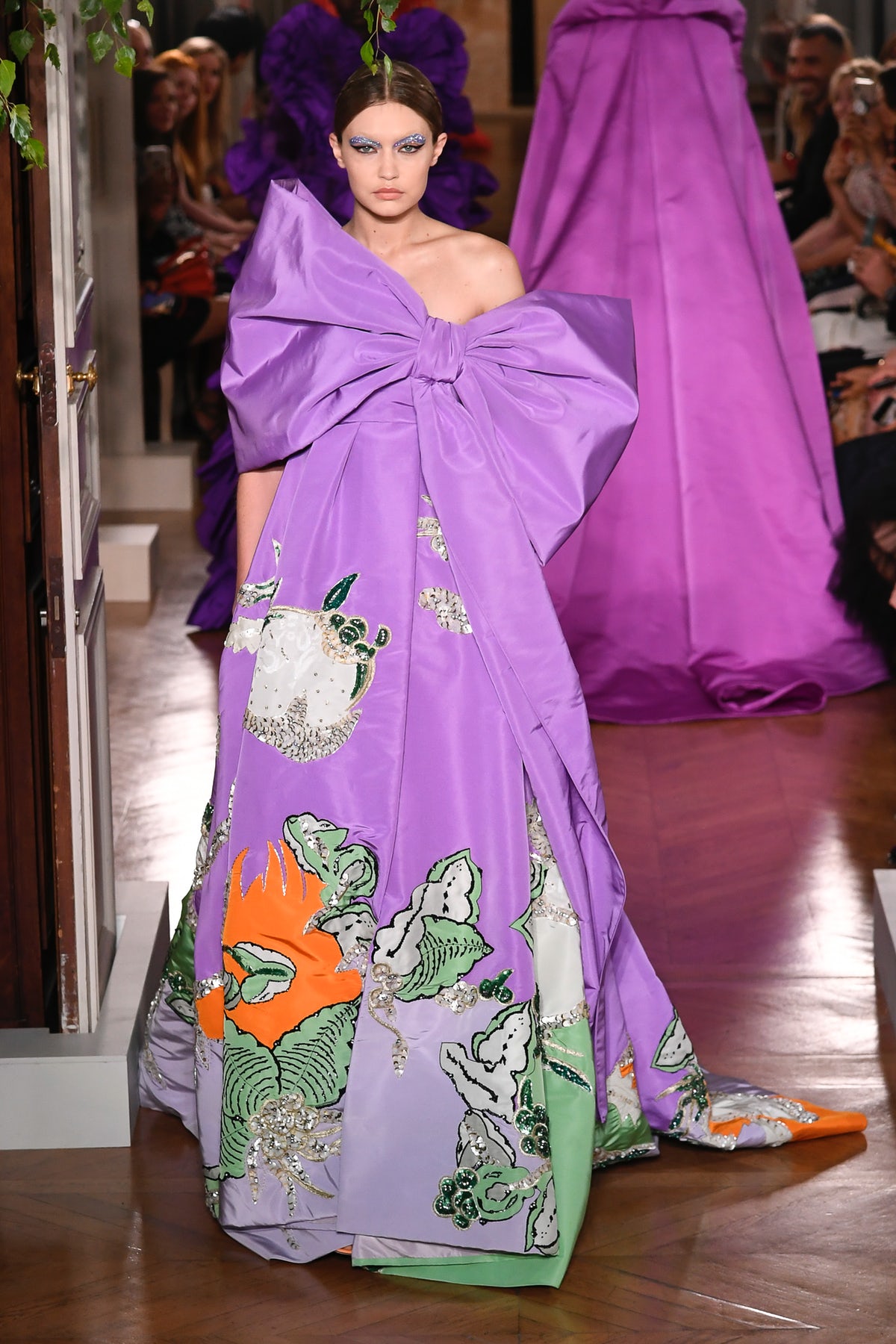
Events
Opinion: At a Time of Streetwear Addicts, Is Haute Couture Still Relevant?
by
Susanna Nicoletti | July 29, 2019
As mainstream fashion moves towards a more casual mode of dressing, does the extravagance of haute couture still make sense?
Twice a year, the most rarefied of all fashion shows takes place in Paris: haute couture.
The latest showing of haute couture took place on June 30 to July 4, featuring brands like Chanel, Dior, Valentino and Giorgio Armani, showcasing some of the best creativity and craftsmanship in the fashion industry. This was seen at Valentino, where creative director Pierpaolo Piccioli presented a very feminine masterpiece of colour, shapes and cuts. One dress featured floral appliqués that required 990 hours to be finished and a gown with squares stitched one by one whose entire production took 2,010 hours.
Models were enveloped in swathes of enticing tones of emerald, saffron, lilac and turquoise, in clothes so beautifully made and embellished they could only have been created by the skilled “petite-mains” of a historic fashion house. This was affirmed by Piccioli’s tribute to the seamstresses in his team and to Valentino in person, highlighting that a creative director can have ideas of the most beautiful clothes but, at the end, it’s everything in the hands of the "petites mains". The final coup de théâtre depends on them.

Valentino Haute Couture Autumn/Winter 2019 (Photo: Courtesy)
Equally, Dior presented a modern, powerful shake-up of art, inspiration and image reaffirming why haute couture still makes sense for some brands. While other fashion houses like Gucci are moving more and more towards mainstream fashion, Dior – which is owned by LVMH – is a shining example in how to perfectly cover the whole luxury and fashion pyramid of categories: impeccable couture presented with a strong image and brand message, great offer of must-haves accessories, beautiful mens’ collection touching on Japanese- inspired street style to the most stylish and elegant looks, fragrance and cosmetics and, last but least, an uplifting jewellery collection.
Giorgio Armani presented a collection inspired by Art Deco and Japan. The designer, now 85, showed a clean, refined and sublimely cut silhouettes at his show, demonstrating a mastery and skill in craftsmanship, honed from years of experience and know-how.
This season also saw the introduction of some more niche and experimental collections, as seen at Schiaparelli who introduced its newly appointed artistic director Daniel Roseberry. And a change in leadership at Chanel, which is still experiencing the loss of its iconic figurehead Karl Lagerfeld, whose collection from its new artistic director Virginie Viard’s reflected a new and modern mood for the fashion house.
At a time when high-end fashion is becoming “fast and furious” in terms of sales volumes, and when the majority of sales that are purchased are driven by plastic sneakers and cotton sweatshirts, haute couture is the precious Aladdin’s cave where the dream of beauty and savoir faire are protected.
Join Luxury Society to have more articles like this delivered directly to your inbox
Admittedly, haute couture is not for everyone. With an estimated client base of 4,000 globally, the number pales in comparison to the growing demand for streetwear, which Bain & Company noted in a report last year was key to driving new customers in the future, after experiencing standout growth in 2017.
But haute couture - which has to meet numerous demanding guidelines and labour-intensive practices to be defined as such - should be celebrated for the freedom it gives to designers to be creative without the usual constraints. While designers are forcibly constrained during the ready-to-wear collections development (by merchandising, by sales, by finance, by supply chain) to think inside of a very claustrophobic box, the very few ones that are allowed to create haute couture are endorsed to free thinking and experimentation.
It is the place where anything is possible from the design of a dress to the finest embroidery. In a time obsessed by algorithms and robots, haute couture is a fresh breeze reminding all of us how still precious is the savoir faire in terms of creativity and creation.
As the late Karl Lagerfeld said: "There is always a creative dynamic between the studio and the expertise of the artisans and the Chanel ateliers who work on my collections. Gradually as the silhouette evolves, the embroideries, the details and the finishes take on a new dimension."
It allows the industry and the general public to see how much a brand is focused on its long term development by its involvement (and investments). Fendi, among others, is doing a great job in mastering the epic of its own brand thanks to flamboyant haute couture collections inspired by the city where it was founded, Rome.
This is a mindset that is deeply needed by the industry and only haute couture projects that are niche and carefree can provide this sense of freedom and inspiration.

